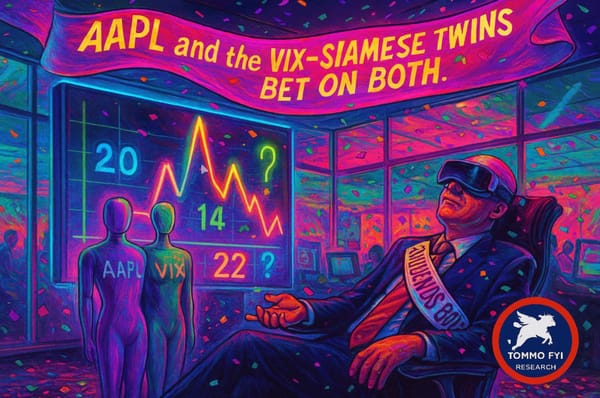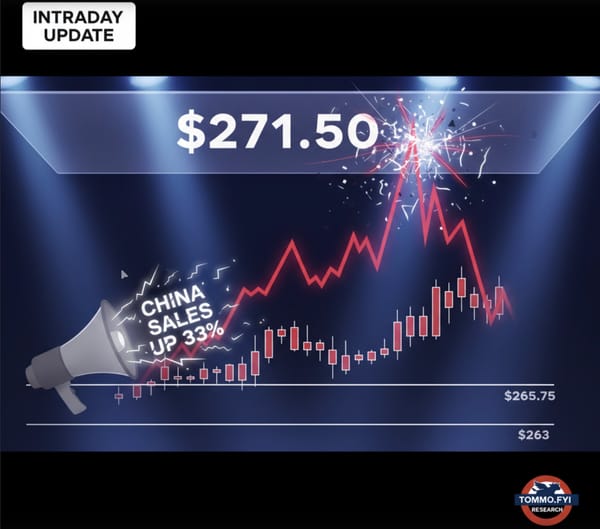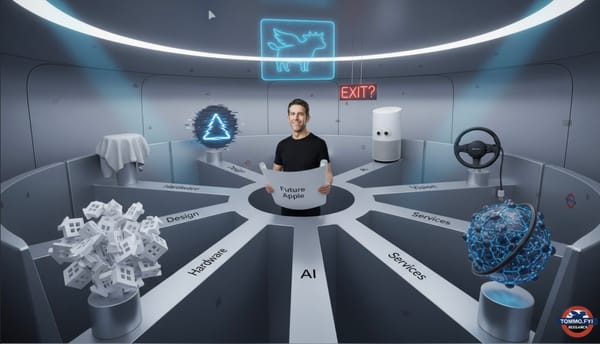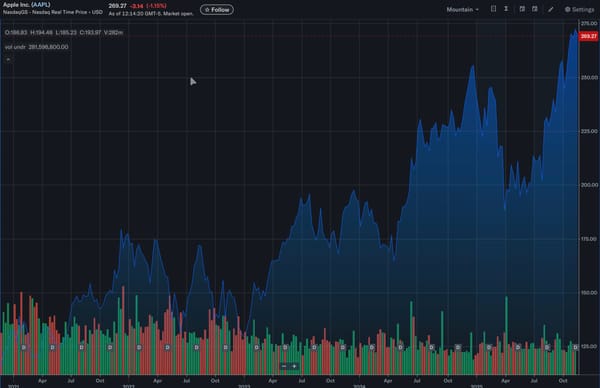AAPL - $160 or $400 ? When Where, How or If: In Response to Subscribers' Questions
Apple seems to have rediscovered its long-MIA vision—but execution still lags behind. As investors weigh looming tariffs, flat earnings, and trust erosion, the question isn’t whether Apple can imagine the future. It’s whether it can deliver it, and by when. Vision is back. Now it has to earn faith.
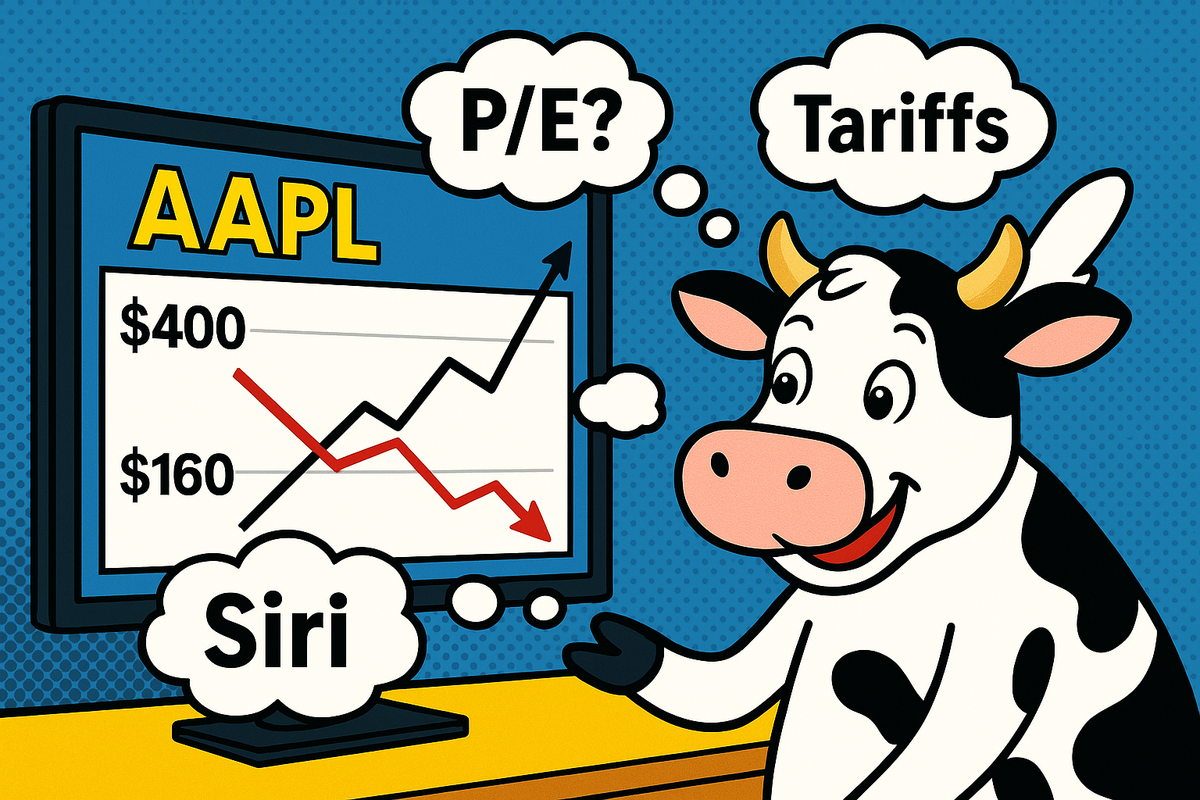
The Vision is Back. Now Can Apple Execute?
Apple’s WWDC 2025 may go down not just as a product event, but as a pivotal moment of narrative reset. Beneath the slick presentations and AI-enhanced flourishes lies something subtler but more powerful: a shift in tone, a hint of humility, and the emergence of a coherent long-term vision—finally.
But a vision, however compelling, is not the same as execution. And several thoughtful readers here have left questions in the comments, which I thought I'd address in a separate article so they're not lost in the comment stream. They've asked the right questions in recent days—not with tribal fervour, but with critical insight. So let me do something rare in today’s online discourse: honour those questions as the foundation of my own thinking.
A Critical Exchange in the comments section of my last article about the questions, and the answers made in the discussion about Apple.

On Innovation, Credibility, and the $400 Question
If there’s one thing I’ve been consistent about over the years, it’s this: I’ll offer praise and critique in equal measure depending on what the moment demands. This week, that moment arrived again — and the questions from readers of this blog have been some of the most thoughtful I’ve seen. Rather than pulpit-preach another solo editorial, I thought I’d turn this post into a direct response — not just to the questions themselves, but to the intelligent tension behind them.
We’re at a curious inflection point with Apple: a moment of cautious optimism shadowed by serious macroeconomic and execution risks. And the smartest investors — like many of you — are right to be asking:
is the vision enough? And will it be enough soon enough to matter?
Let’s take it apart, together.
“Is Apple even capable of another breakout product, or is that era over?”
Ben Gepp asked:
*“It still has the potential to become the success and innovation story it once was… But is that at all likely?”
Ben’s point is, in effect, existential. He’s not lamenting Apple’s fall from grace — he’s probing whether there’s still any fertile soil left for that kind of innovation in 2025 and beyond. He eloquently traced the arc from the iPod through the iPhone and Apple Watch, pointing out how each subsequent “new category” has mostly been a biologically related iteration of the original digital organism.
This is exactly why I wrote my SenseOS article before WWDC — not as a wishlist, but as a blueprint for what couldignite that next phase. Remarkably, Apple’s AI announcement bore a near-identical resemblance to the structure, user-focus, and long-horizon ambition I laid out — a signal that at least the vision is finally aligned. The problem now is timing.
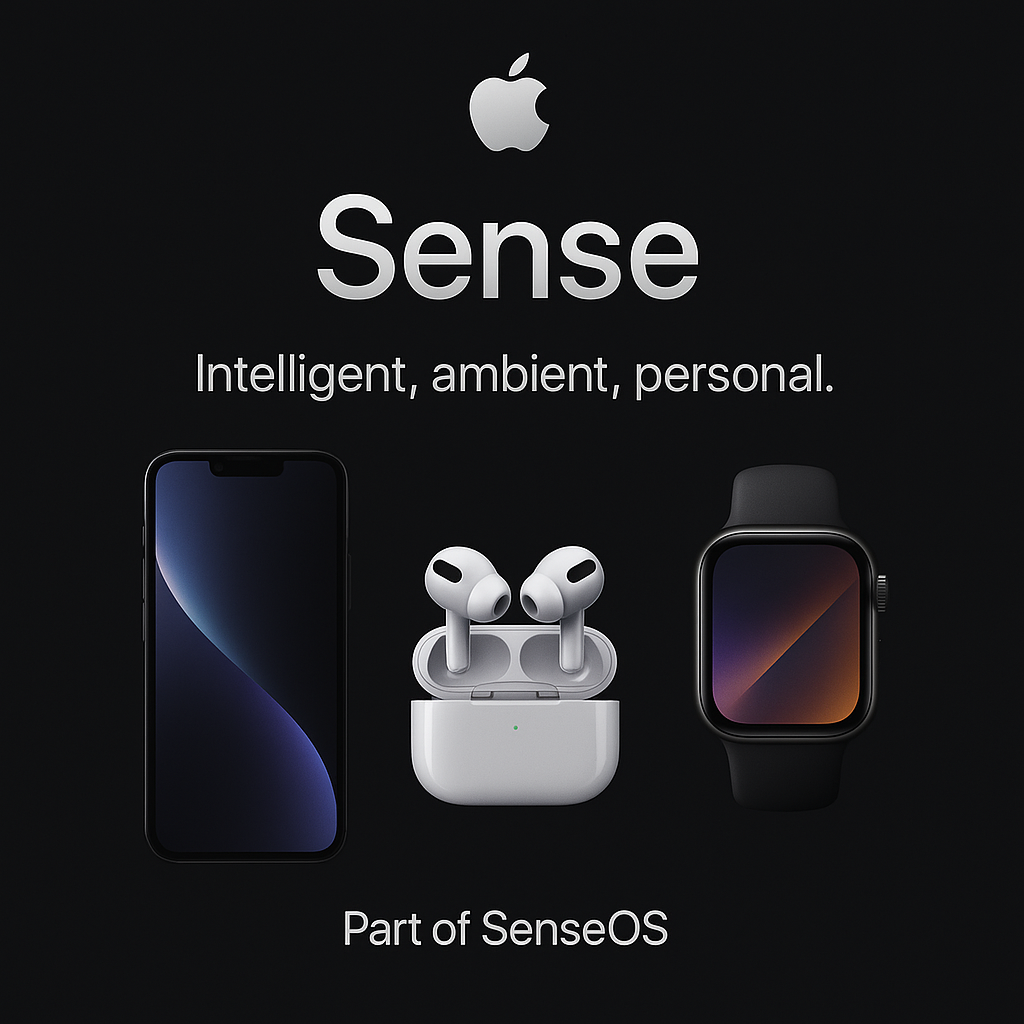
What we saw at WWDC (or rather the actual developer sessions after it) was the mood music of innovation returning. Developers were audibly re-energised. But the harsh truth is this: the true impact of this ‘next act’ won’t be felt until 2026–2027.
That’s the optimistic timeline — if Apple can stick the landing.
But for now, the dance card is still empty.
“What if Apple can’t survive another year without showing real earnings growth?”
Several of you brought this up in different ways. In a reply to Rodney Avilla, who wondered if $400 was still on the cards, I noted:
“No, I don’t think $400 is possible for 2027 now. Apple has lost a year, and the momentum and trust needed to get there.”
Let’s not sugarcoat it: even with the right vision, Apple is heading into what could be some of the worst comparable earnings quarters it’s had in over a decade.
Why?
- Tariff threats loom large and fast — particularly if Trump retains power. You can build in anywhere from 10-40% (who knows yet) into a hit to GMs for US-sold products, which constotute 45-55% depending on product range, of Apple's total sales.
- CapEx is rising, as AI infrastructure ramps up.
- Input costs remain elevated due to global inflation and geopolitical instability, rising manufacturing costs in Inida and Vietnam 8-10% higher than China
- iPhone 17 skepticism is likely to weigh on sentiment — even if it turns out "better than expected." A lot of people prematurely upgraded to the iPhone 16 on the promise of its need of a new model to run AI and given AI isn't scheduled until this time next year, by which time the iPhone 18 will presumably be almost baked, many may wonder if they shouldl upgrade at all this year.
And all of this comes at a time when Apple’s PE multiple — still north of 25 — implies ongoing, robust growth. That assumption, as I warned in my post this week, is resting on helium heels because earnings growth is already almost flat, implying that any hit to GMs from rising tariffs and manufacturing costs and CapEx could tip the baance into negative territory for a few quarters. The optics of that with a multiple this high are just not sustainable in my opionon.
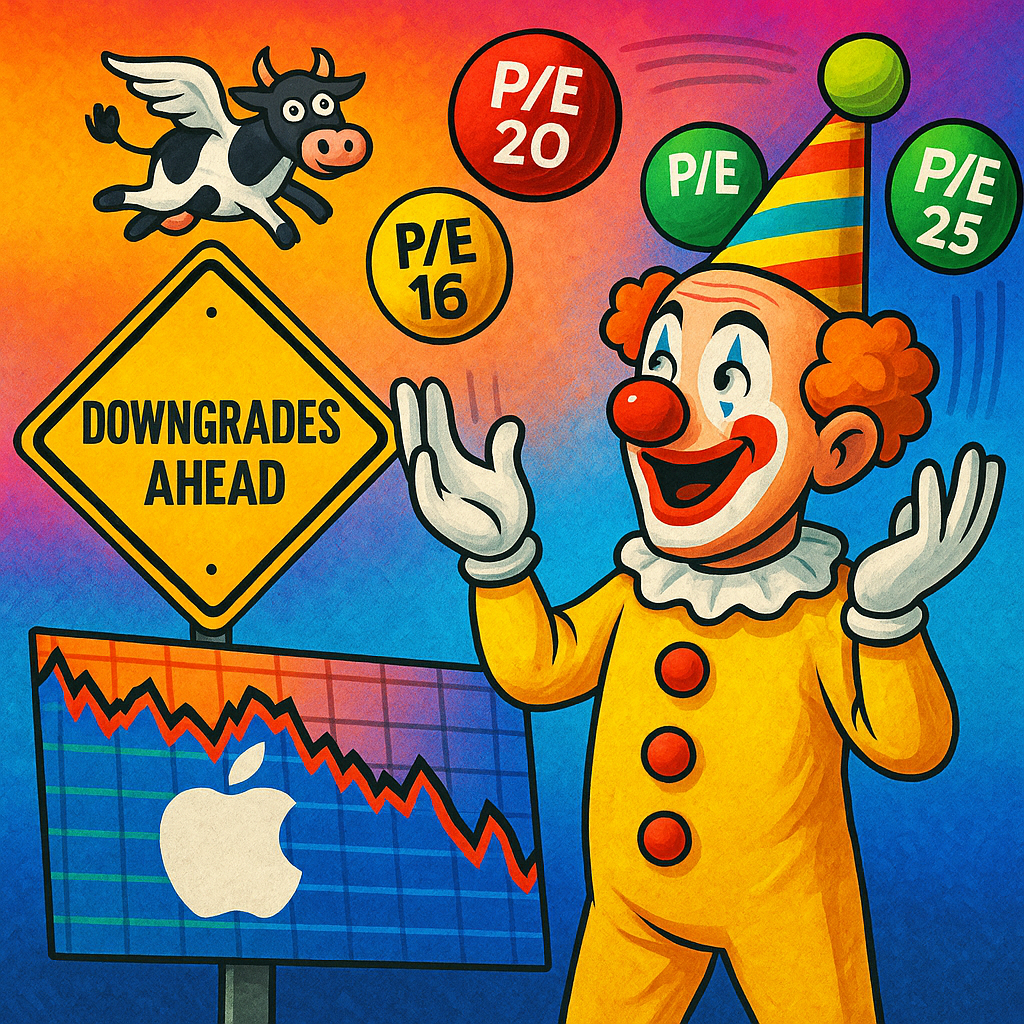
If Apple reports flat or negative earnings growth in the next 1–2 quarters — and that possibility is very real — we could see a multiple compression to 18–20. Do the math, and that puts us back in the $155–170 range without breaking a sweat. Pretty much as I forecase in March, when the stock took a nosedive a few weeks later to $169 on precisely these fears.
In other words, macro still rules the short term — even if vision returns for the long. but one can be long term positive but short term realistic. Two opposing truths can both be valid at once, if you accont for the temporal aspect.
“Can we even trust Apple anymore to deliver what it promises?”
Dan Scropos asked this obliquely, reflecting on Gruber’s infamous rant:
“I’m willing to give them the benefit of the doubt and surmise the Siri debacle was somewhere between stretching the truth and vaporware. But we’ll likely never know.”
This is a hard one. I responded to Dan noting that my own initial reaction to Gruber’s outburst last year was dismissive — until I re-read it and realised he was right. Not in tone, perhaps, but in principle.
“Like it or not, and whether he was using hyperbole or a sense of betrayal or both, ultimately his takeaway was 100% correct. It was and remains vaporware without any delivery schedule, with a slew of broken promises and carnage in its wake.”
Apple’s track record over the past five years has been marred by what I call management exceptionalism — the sense that rules don’t apply if you’re Apple. That culture of internal denial, hubris, and political turf warfare killed the car project, delayed Siri, fractured design, and ultimately led to a string of half-executed products and court case disasters (still ongoing).
The good news? That culture seems to be getting purged. Quietly. Efficiently. In the background. And the roadmap revealed this week — while vague in its launch specifics — actually makes sense. Which is the first time I’ve been able to say that in half a decade.
“Does this change the $400 trajectory?”
Rodney Avilla again:
“Was that a connect-the-dots-it’s-gonna-happen kind of prediction, or just ‘if it goes up, it might go to $400?’”
Great question. The answer is that Apple’s path to $400 for 2027 I outlined as a scenario always relied on two things:
- Executional credibility (which it had lost but may be regaining)
- Earnings growth consistency (which is still MIA and may get worse before it gets better)
- Rediscovering its ability to inspire and dazzle not with bloated feature sets but through human interface language and guidelines.
So right now? It’s not about $400 any more. Not by 2027 anyway.
It’s about surviving the next 6–9 months without the stock giving up 25% of its value in the meantime before an inevitable climb, but without a firm destination in mind, because the timeline is simply unknown.
After that? If Apple proves it can walk its new talk, if AI-based Siri turns out to be real not rhetorical, if CapEx turns into capability not drag, then the story re-accelerates. But not before.
That’s why I’m not issuing any new price targets right now. There’s too much fog. I’ll pin one again when I can feel the ground.
The stock is at $195 as a write, falling almost $4 after news yesterday late in the day that Siri/AI was being delayed up to a whole year. Not a huge fall, but another chip off the block. Mutedly encouraging even? Markets seem to have shrugged of Israel bombing Iran and Iran virtually declaring war on Israel. But hey who cares right, because it's half way across the world and has no implications, right? I mean, what could possibly go wrong blowing up nuclear installations? Dissonance rules.
“So… Are You Bullish or Not?”
A few asked this outright — or at least implied it.
Let me be clear: I’m not bearish. About the company at least, now, stock slides aside. If anything, I’m encouraged — and cautiously optimistic again for the first time in a while having seen the vision return and the glimpse of internal cohesion. With a caveast that my impression is, management hae taken a breathtaking and bruising puching for the last year and deservedly so, but this is a bit last chance saloon if Apple is going to be the heartbeat of innovation rather than just a competent manufacturer like Sony, for example.
So I’m not giving them a pass yet. And neither should you. As I said to SG:
“They lost that privilege, and trust has to be earned, the hard way, by delivering, to regain it.”
Apple has stopped the bleeding. It has re-discovered the map. It’s even started to reassemble the crew. But the voyage hasn’t started yet. And the seas ahead are rough. Let’s not mistake a promising direction for a safe arrival.
Final Thought: Why This Conversation Matters
Apple’s biggest threat now isn’t Meta, or Google, or even Microsoft. It’s not earnings compression or margin pressure.
It’s cynicism.
The kind that festers when a company stops listening. When it hides behind marketing. When it assumes loyalty instead of earning it.
What’s changed this week is not that Apple solved all its problems. But for the first time in years, it acknowledged them— even if only through tone and structure and roadmap, and articulated a clear vision, with enough time built in to execute.
That, my friends, is why your questions are so valuable. Because they reflect a community not ready to give up — but unwilling to be taken for granted. That’s critical thinking. That’s why I write. And that’s why this community matters more than ever.

Thanks for asking the right questions.
— Tommo, Friday 13th June, 2025




